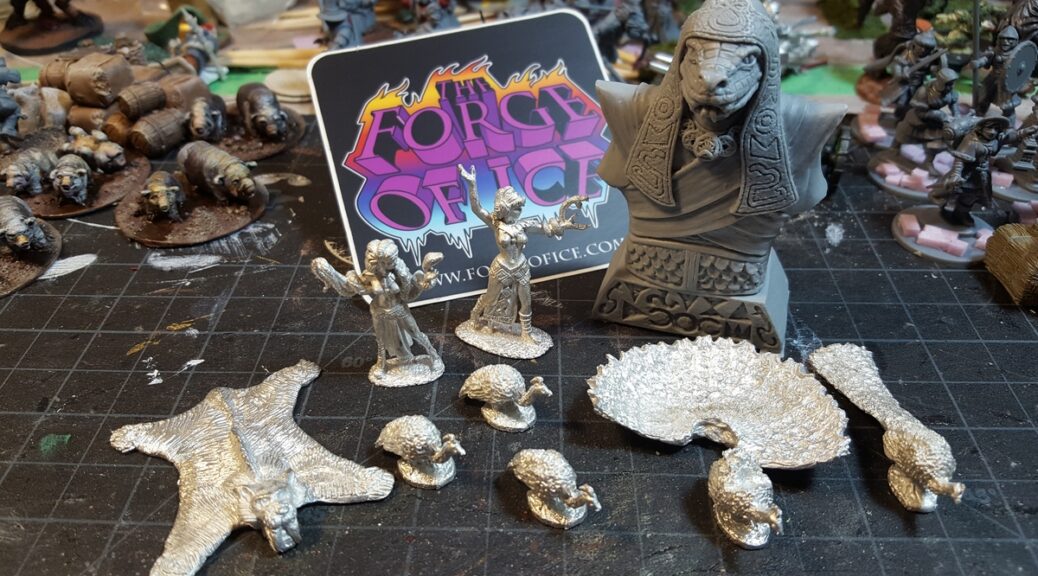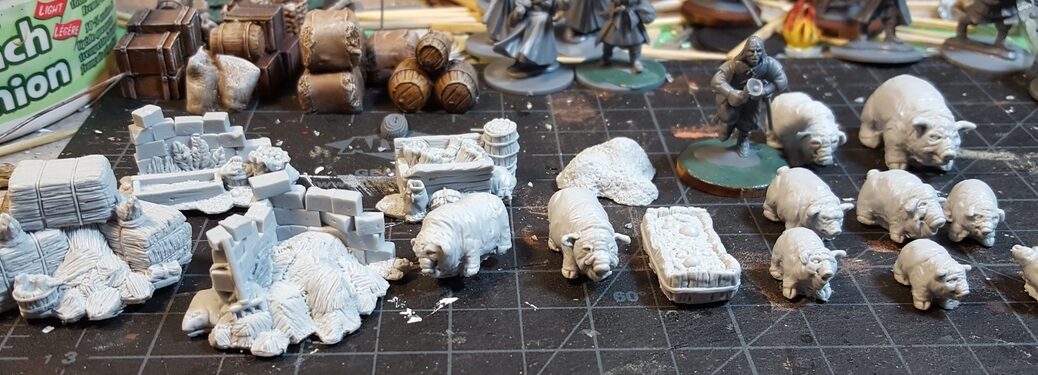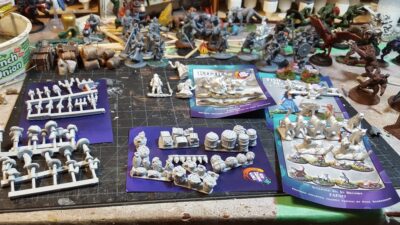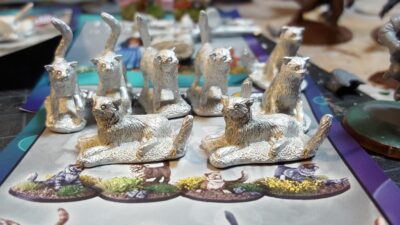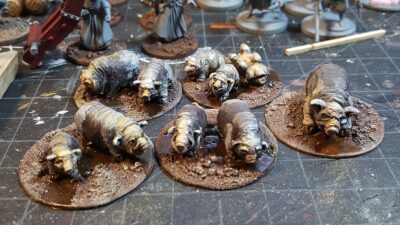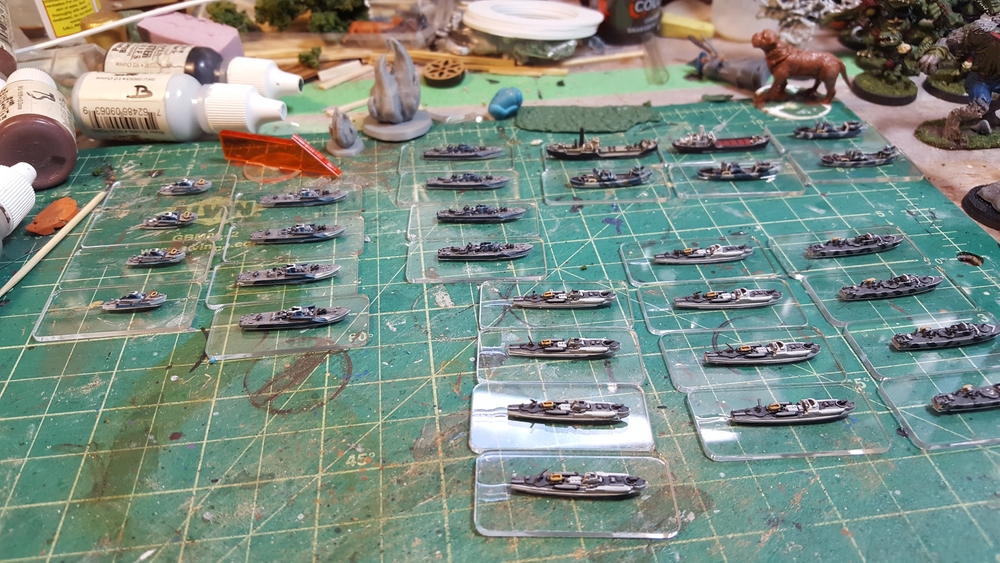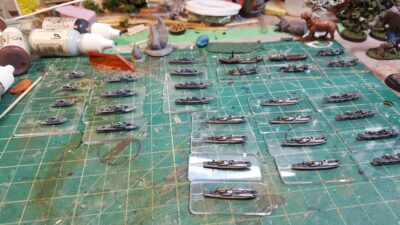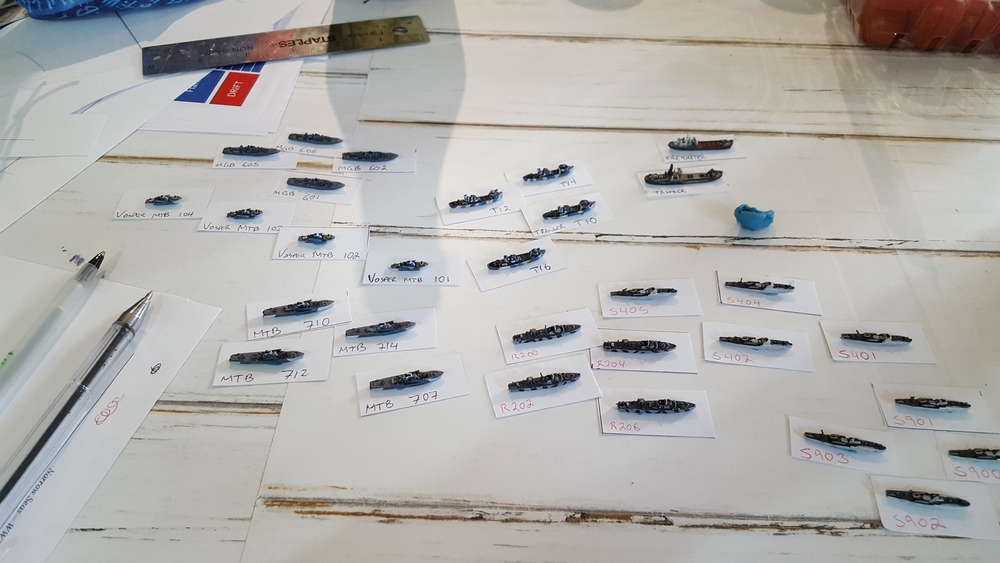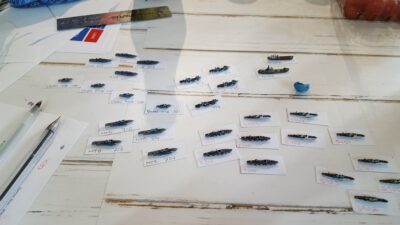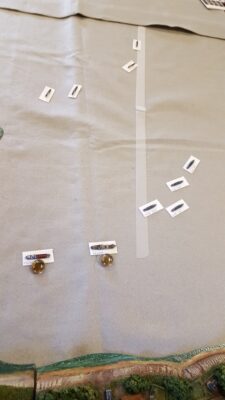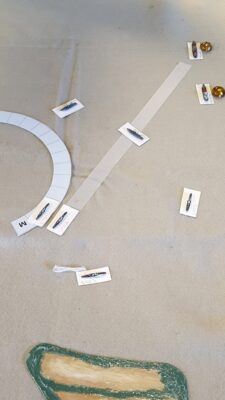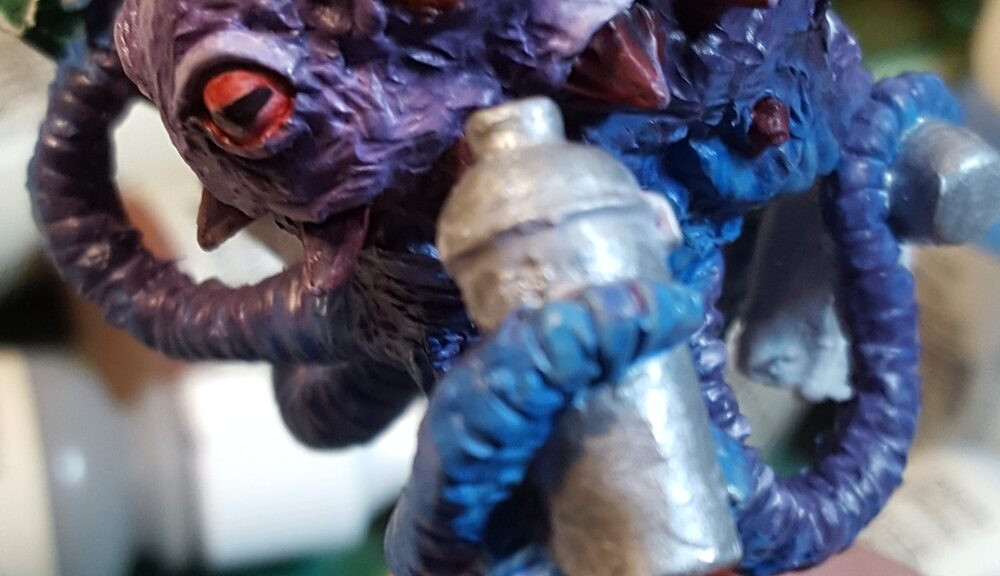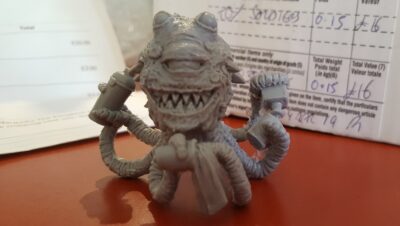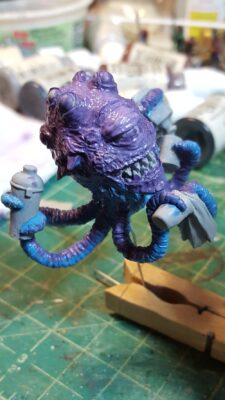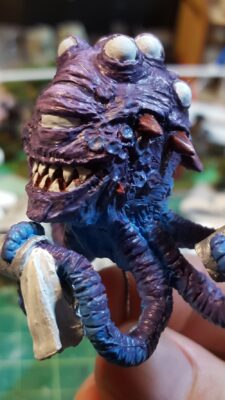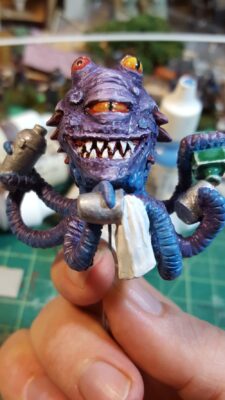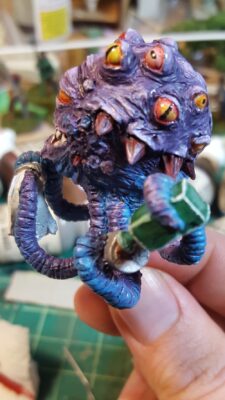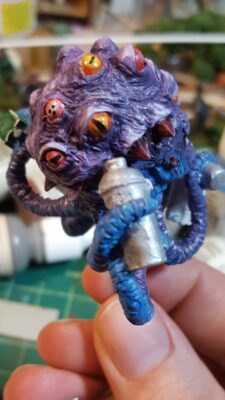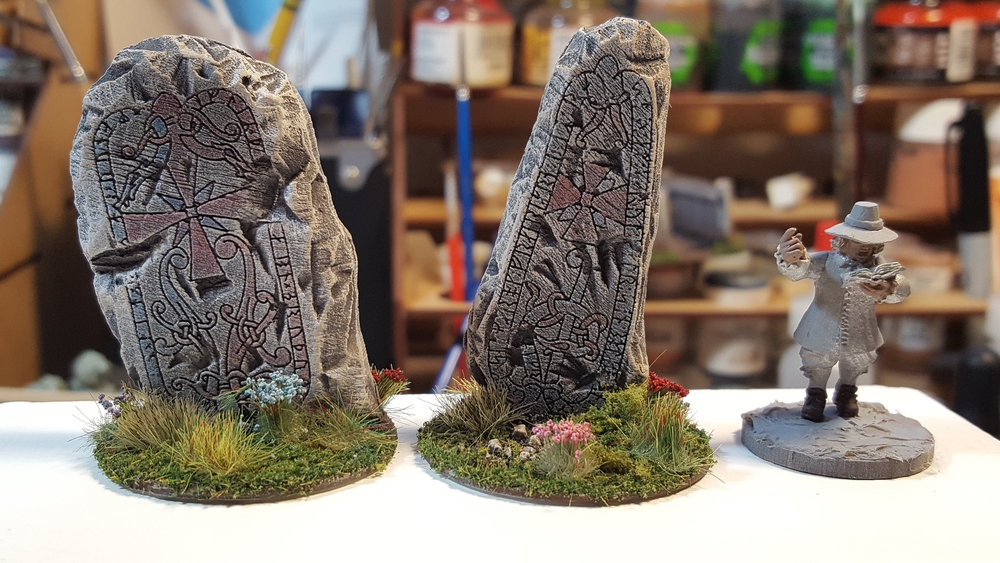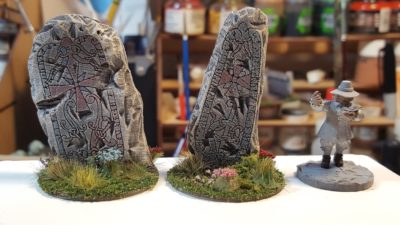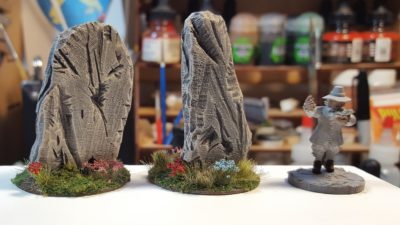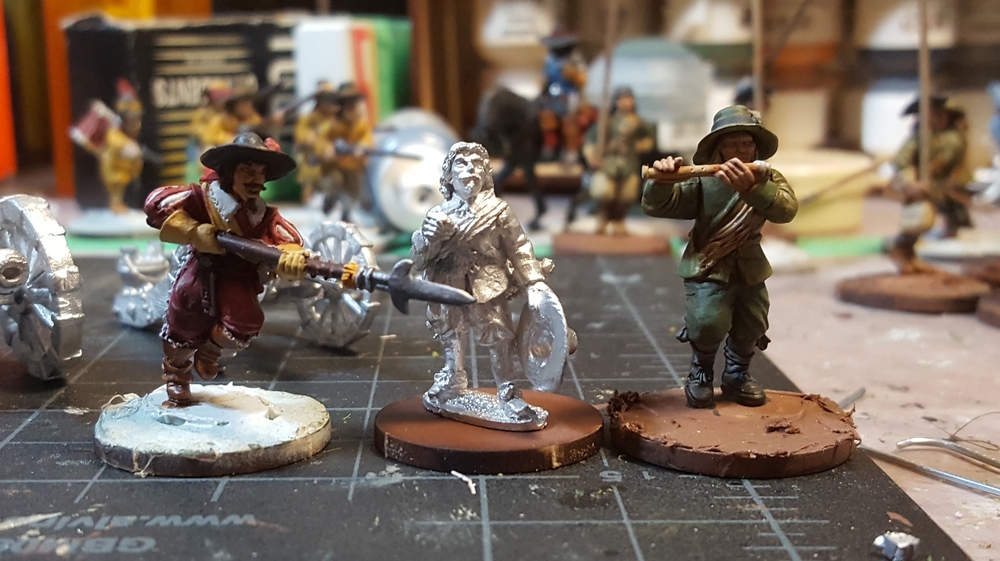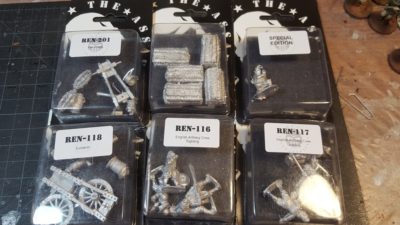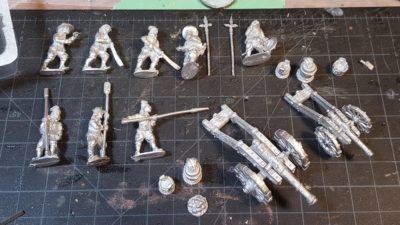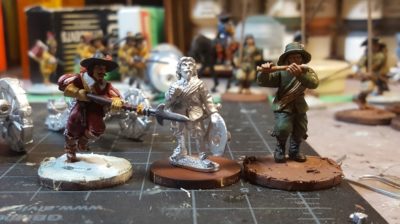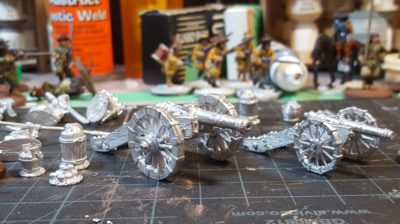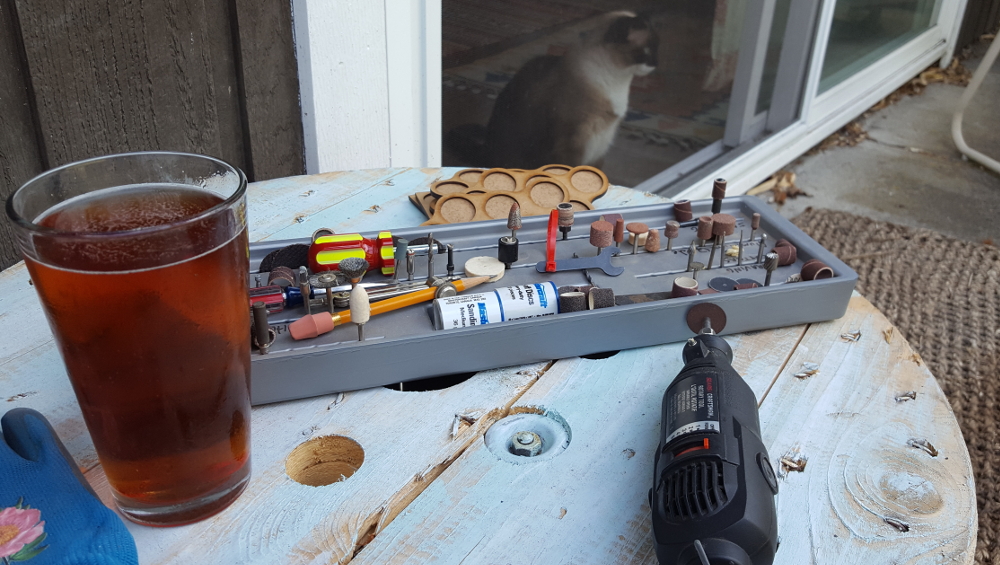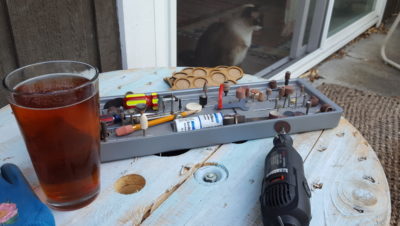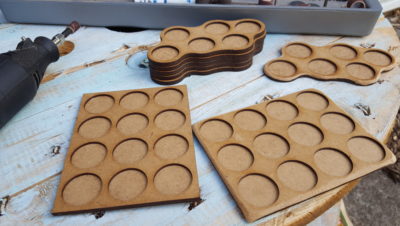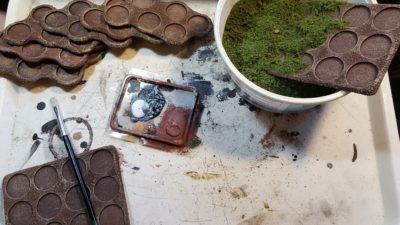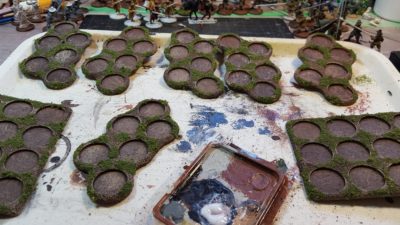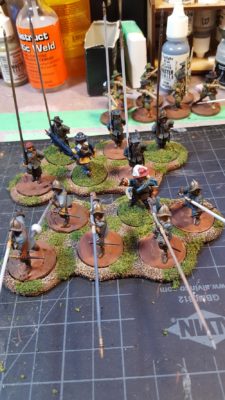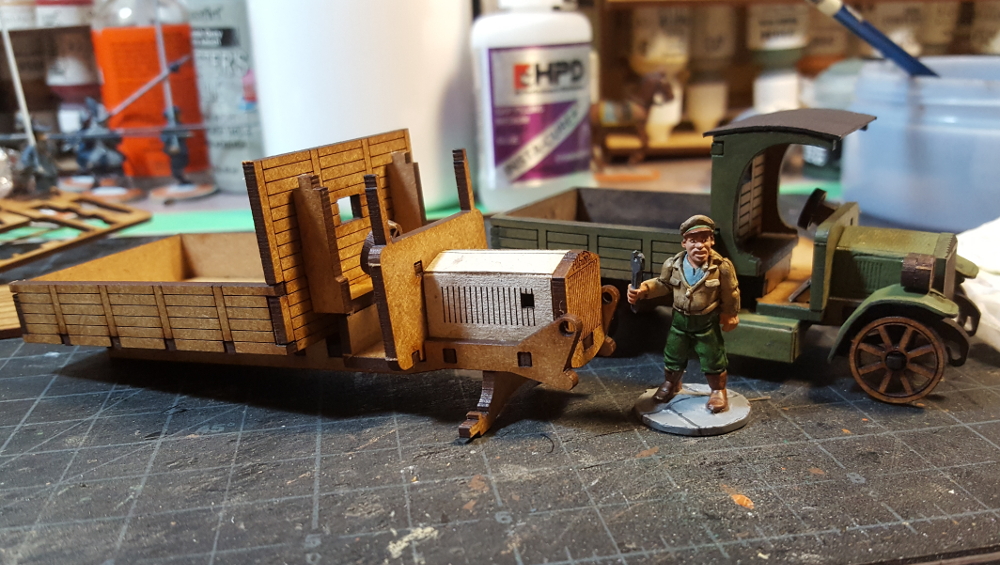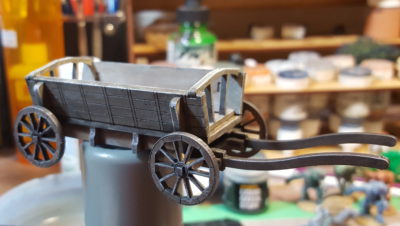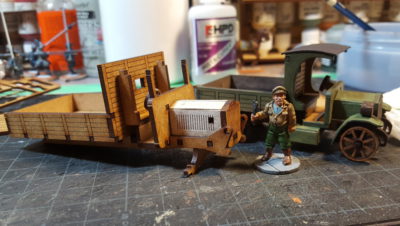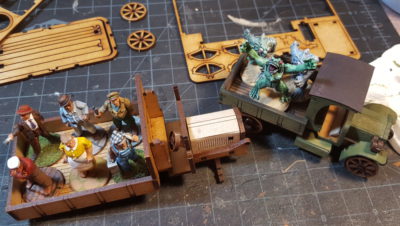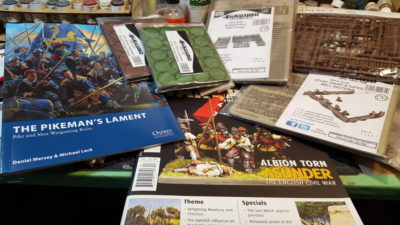Forge of Ice is one of those one-person companies that makes all sorts of cool stuff, and after knowing about them for several years I finally got around to making a small order from them a few weeks ago. Most of the fascinating little one person companies are British, but Forge of Ice is in fact based in Fairbanks, Alaska.
Alex, who is the entirety of Forge of Ice, still doesn’t have an actual website but he’s got a Forge of Ice Facebook page, is very responsive by FB Messenger, and has an illustrated catalog thread over on the awesome Lead Adventure Forum as well, which is frankly easier to navigate than Facebook’s chaotic unsearchable nonsense.
Forge of Ice mostly does Lost World style stuff, small dinosaurs, oddball caveman-style accessories and stuff. I’m not doing much Lost World style pulp at the moment, but I have in the past and I’m certain I will in the future. Besides, I could always cross-pollinate my current weird 17th Century stuff with Lost World, couldn’t I? Hmmm…
Anyway, what did I get from the frozen depths of central Alaska? A pair of Snake Priestesses, a batch of five peacocks, a sabertooth tiger rug, and the centrepiece of this little collection, a resin Doom Serpent Idol.
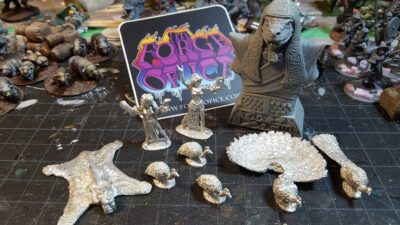
The serpent priestesses are elegantly slim 28mm figures, both slender women with large snakes wrapped around their arms and shoulders. I have no immediate plans for them, but they’re awesomely pulpy and clearly need some sort of group of underpriestesses, guards, and temple lackeys to order about in their sneaky attempts to do whatever it is snake priestesses from a Lost World plot to do.
The peacocks are some of the first figures Forge of Ice released, several years ago, and I’m thinking that as well as being just general fancy set dressing, with a couple of house rules they could be mobile alarm units in a Pulp Alley scenario where players are trying to sneak up on a fancy house and don’t dare disturb the peafowl least the damn things scream the place down and alert guards or something! (if you’ve never heard a peafowl scream, they have a glorious bloodcurdling horror movie shriek. It’s awful.) The smaller female peahens and the male peacock with his tail down are both single piece castings; the peacock in full display mode is two pieces. There will need to be a bit of filing and puttying to get the body of the peacock and his tail to match up nicely, but nothing outrageous.
The saber tooth rug was just too much fun to pass up, I suspect I’ll use it as weird decoration in someone’s study or something!
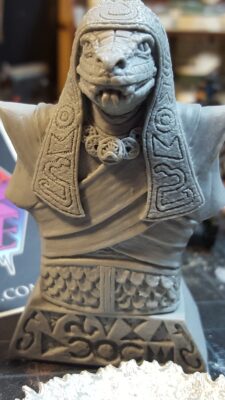
The Doom Serpent idol is a fairly serious chunk of fine grey resin, about 3″ tall and just over 2″ wide at the shoulders. I’m really looking forward to painting this one up, I’m thinking a sort of blond/tan sandstone look like we see in Egyptian statues, with some coloured painted bits here and there, will look great.
Hopefully one of these days Alex gets around to getting Forge of Ice an actual website, but in the meantime go have a look at his Lead Adventure thread (you don’t need a LAF account to see it) and ping him by email, by the message service at LAF, or via Facebook Messenger to get your cool weird Lost World loot from the distant north!

